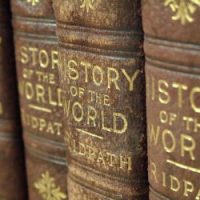Category: Essay Examples
Essay examples are of great value for students who want to complete their assignments timely and efficiently. If you are a student in the university, your first stop in the quest for research paper examples will be the campus library where you can get to view the sample essays of lecturers and other professionals in diverse fields plus those of fellow students who preceded you in the campus.
Browse Essay Examples:
Many college departments maintain libraries of previous student work, including essays, which current students can examine. This collection of free essay examples is our attempt to provide high quality samples of different types of essays on a variety of topics for your study and inspiration.
The Brahmo Samaj and Arya Samaj were two important institutions that developed in 19th-century India against existing social practices. The impact of the West resulted in a social and cultural renaissance in India. To regenerate society, it was felt that modern sciences and ideas of reason were essential. …
Unlike many Spanish-American countries that fought for independence and founded republics thereafter, the Portuguese colony of Brazil gained its independence virtually without bloodshed and remained under the same royal family that had once ruled the territory from afar. Hence Brazilian independence entailed a large degree of continuity. The …
Many religious denominations call themselves brethren. Pious German immigrants established most of these groups in America. The oldest and largest of them is the Church of the Brethren, founded in Germany by Alexander Mack in 1708. This denomination, with well over 200,000 American members, is one of the …
The British East India Company was founded in 1600, during the last years of the reign of Queen Elizabeth I of England, for trade in the East Indies, which had been opened to European trade by the Portuguese navigator Vasco da Gama. Because of rivalries for the spice …
The first British involvements in South Africa were a result of maritime traffic going around the Cape of Good Hope to India. In the 17th century, the British East India Company had established trading stations at Madras, Bombay, and Calcutta. By the 18th century, a thriving trade led …
The office of the governor-general of India was established in 1773 when Warren Hastings was made the first governor-general of the presidency of Fort William, Calcutta, taking up the position in the following year. Initially the office only had control over Fort William, but it quickly came to …
Through diplomatic negotiations in 1881–82, the British and French reached an agreement whereby the French occupied Tunisia in North Africa and Britain took Egypt. The British militarily defeated Egyptian nationalist forces led by Ahmed Urabi at the Battle of Tel-el-Kebir in 1882. The Dufferin Commission was then sent …
The early history of Buganda begins with the dynasties starting in roughly 1300. Among them, the Chwezi were the most prominent. The balance of power was changed by the arrival of Luo-speaking people from the Upper Nile who were looking for good land, which they found in Uganda. …
Anson Burlingame was a lawyer who served as a member of the U.S. House of Representatives from 1855 to 1861 and as minister to China from 1861 to 1867. In 1868 the Chinese government appointed him ambassador to negotiate treaties on China’s behalf with the United States and …
The three Burmese Wars were the result of frictions between the British East India Company, which ruled a growing British dominion in India, and the kingdom of Burma, or Ava. The First Burmese War was fought from 1824 to 1826 over long-standing frontier disputes that the East India …
Prior to 1867 North American Canada was better described as a collection of Canadas. The Atlantic Maritime provinces focused on fishing, lumbering, and shipping. Lower Canada was home to New France habitants pushed unwillingly into the British Empire when the Seven Years’ War/French and Indian War ended in …
In mid-18th century the Qing (Ch’ing) dynasty of China confined all foreign traders to the port of Canton (Guangzhou) in southern China and restricted trade. In Canton, all merchants were banned from direct contact with Chinese officials and were confined to an area of 13 factories, located outside …
When Czarina Elizabeth died in December 1761, her nephew Peter ascended the throne. He had already alienated his wife, Catherine (Sophia Augusta, the princess of Anhalt-Zerbst in the Holy Roman Empire), by his evident lack of affection for her. Some historians believe that their son Paul was actually …
Understanding the phenomenon of the caudillo is essential for understanding the political history of 19th-century Latin America. (The terms caudillismo and caudillaje refer to the more general phenomenon of rule by caudillos.) While there is no universal definition that fits every caudillo under all circumstances, scholars generally agree …
Count Camillo Benso di Cavour was an Italian statesman who forged the unified Kingdom of Italy. Cavour was born in northwestern Italy in Turin, the capital of Piedmont-Sardinia, ruled by the House of Savoy. Cavour was earmarked for an army career, and he enrolled in the military academy …
The term National War in Central America refers to the combined military efforts of Nicaragua, Costa Rica, Honduras, Guatemala, and El Salvador to defeat the forces of Tennessee-born U.S. filibuster William Walker in 1856–57. The Walker episode represented the pinnacle of 19th-century U.S. filibustering, or private mercenary efforts …
The Portuguese arrived in Sri Lanka in 1505 and took over the kingdoms of Kotte and Jaffna, with the kingdom of Kandy, largely because of its geographical position in the center of the island, managing to remain free of their rule. Thus, when the Dutch admiral George Spilberg …
The Chakri dynasty was established on April 6, 1782, when Chao Phaya Chakri was crowned the king of Thailand (formerly Siam) as Rama I. The rulers belonging to the house of Chakri have been kings of Thailand ever since. The illustrious rulers of this dynasty took the country …
The fast-moving blaze that consumed more than three square miles of Chicago, Illinois, causing the Chicago River to boil, killing at least 300, and leaving 90,000 homeless, would, within two decades, produce a reinvented city more prosperous and beautiful than had seemed possible when the fire burned itself …
Student resistance to classroom instruction is often conceptualized as a student’s critical rejection of formal and impositional academic content knowledge. Yet student resistance in K–12 and higher education can be understood in much broader and more nuanced terms. If student resistance is viewed as the willful (be it …

